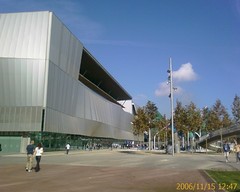The link above is a test Link to a picture taken at Microsoft's IT forum.
The History
In my work I have recently had to complete a number of IT Infrastructure assessments for clients and I thought that I would document some of my findings in an effort to start building an online Toolbox or reference site if you will, with thoughts, ideas, processess and possibly links to tools to help in future endeavors.
Data Collection
The very first problem that faces the assessor is what data to collect, even before the obvious next question of how to collect it. The key thing here is to not collect too much data (and believe me this is all too easily done) but instead focus and zoom in on the key data that in the end will drive and determine the shape of your solution.
Some typical examples of key driving criteria:
- Number of users
- Number of devices (and type)
- Number of servers (and type)
- Number of sites
- Bandwidth between these sites
- Number of printers (queues)
- Number of Groups
- Number of Mailboxes
- Number of Shares
- Etc...
Assessment Stage
The most important thing in this stage is to 'slice and dice' the data collected and work on formatting and presentation of this data in order to start extracting a conclusion (the conclusion can also be incorporate a proposal for a new solution).
Presentation Stage
This is typically the last stage in which the outcome of the previous stage is presented to the customer. Some key things to do would be to develop you final conclusion in digestable material (often a presentation accompanied by a more elaborate document) and have the preview checked off by the customer to get their buy in and ensure a that what you have come up with is not out of line with the expectations of the customer. Should things not be as expected, there is still time to adjust the conclusion and bring it completely in line.
to be continued...
